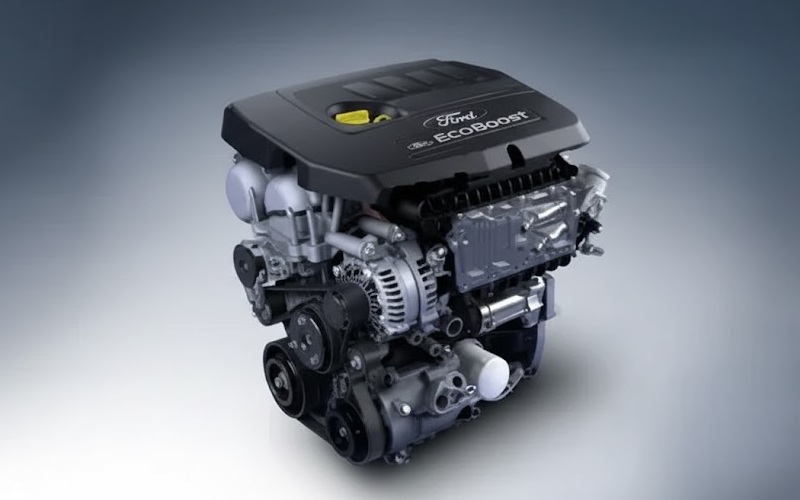The Ford EcoBoost engine family represents one of the most significant technological advances in modern automotive engineering. These innovative powerplants deliver impressive performance while maintaining exceptional fuel efficiency, changing the way drivers think about engine displacement and power. By combining direct fuel injection, turbocharging, and advanced engine management systems, Ford has created a versatile engine platform that offers compelling benefits across their vehicle lineup.

The EcoBoost Technology Foundation
At its core, EcoBoost technology relies on three primary elements working in harmony to maximize both power output and fuel economy:
- Direct fuel injection delivers precisely measured fuel directly into the combustion chamber rather than the intake port, improving combustion efficiency and reducing fuel waste
- Turbocharging uses exhaust gases to drive a turbine that forces additional air into the engine, allowing smaller engines to produce power comparable to larger ones
- Advanced engine management software continuously optimizes performance parameters based on driving conditions, load requirements, and efficiency targets
This technological trifecta enables smaller-displacement engines to deliver power equivalent to or exceeding that of larger conventional engines while consuming significantly less fuel under normal driving conditions. The result is a more responsive driving experience with reduced environmental impact—a balance previously thought impossible to achieve.
Performance Benefits Without Compromise
The most immediately noticeable benefit of EcoBoost engines is their impressive performance. Despite their relatively modest displacement, these engines deliver exceptional power and torque figures:
- The 1.0L three-cylinder EcoBoost produces up to 125 horsepower and 170 Nm of torque
- The 1.5L four-cylinder generates approximately 180 horsepower and 240 Nm of torque
- The 2.0L four-cylinder delivers up to 250 horsepower and 380 Nm of torque
- The 2.7L V6 creates around 330 horsepower and 540 Nm of torque
- The 3.5L V6 produces up to 450 horsepower and 690 Nm of torque in high-output applications
These impressive figures come with acceleration characteristics that differ noticeably from naturally aspirated engines. EcoBoost engines typically deliver peak torque at much lower RPM—often between 1,500-3,000 RPM—placing maximum pulling power exactly where drivers use it most in everyday driving.
This low-end torque translates to exceptional responsiveness in real-world conditions. Vehicles equipped with EcoBoost engines offer strong acceleration from a standstill and excellent passing power without requiring dramatic downshifts or high engine speeds. The practical benefit is confident merging, effortless highway passing, and a more relaxed driving experience overall.
Fuel Economy Advantages
Perhaps the most compelling benefit of EcoBoost technology is its ability to deliver significant fuel economy improvements without sacrificing performance. By using smaller-displacement engines that perform like larger ones, Ford has achieved fuel consumption reductions of approximately 15-20% compared to similar-output naturally aspirated engines.
This efficiency advantage stems from several factors:
- Smaller engine displacement means less internal friction and reduced pumping losses
- Direct injection allows precise fuel metering and more complete combustion
- Turbocharging recovers energy from exhaust gases that would otherwise be wasted
- Electronic throttle control and variable valve timing optimize engine operation for different driving conditions
Under light load conditions—such as steady-speed highway cruising—EcoBoost engines operate with minimal turbocharger intervention, essentially functioning as smaller, more efficient engines. The turbochargers engage progressively as power demands increase, providing additional output only when needed.
Many EcoBoost-equipped vehicles also feature auto start-stop technology, which automatically shuts off the engine when the vehicle is stationary and restarts it when the brake is released. This feature can reduce fuel consumption by up to 10% in heavy traffic or city driving conditions by eliminating wasteful idling.
Reduced Environmental Impact
The improved efficiency of EcoBoost engines directly translates to reduced environmental impact through lower emissions:
- Carbon dioxide (CO2) emissions decrease proportionally with fuel consumption, typically 15-20% lower than comparable naturally aspirated engines
- More precise fuel delivery and optimized combustion reduce unburned hydrocarbon emissions
- Smaller engine displacement with equivalent power means less fuel burned overall
For environmentally conscious drivers, EcoBoost technology offers a compelling middle ground between conventional engines and hybrid systems. The engines deliver meaningful emissions reductions without the complexity, weight, and cost associated with full hybrid powertrains.
Ford continues to refine EcoBoost technology to meet increasingly stringent emissions standards worldwide. Recent updates include enhanced thermal management systems, reduced internal friction, and optimized turbocharger designs that further improve both efficiency and emissions performance.
Practical Benefits for Vehicle Design
Beyond the direct advantages of performance and efficiency, EcoBoost engines offer significant benefits for overall vehicle design and packaging:
- Smaller engine dimensions allow for more compact engine compartments
- Reduced engine weight improves front-to-rear weight distribution
- Lower center of gravity enhances handling characteristics
- Smaller engines provide additional crumple zone space for improved crash protection
- Compact dimensions create more space for cabin and cargo areas
These packaging advantages have allowed Ford to design vehicles with improved interior space, better handling dynamics, and enhanced safety features. The smaller size and lower weight of EcoBoost engines have proven particularly beneficial for crossover and SUV applications, helping reduce overall vehicle weight and improve handling without compromising power.
Reliability and Longevity Improvements
Modern EcoBoost engines incorporate numerous technological advances that contribute to excellent reliability and longevity:
- Cast aluminum blocks and heads reduce weight while providing excellent heat dissipation
- Forged crankshafts and connecting rods in higher-output versions ensure durability under stress
- Roller finger follower valvetrains reduce friction and wear
- Variable oil pumps deliver precise lubrication based on engine needs
- Advanced cooling systems maintain optimal operating temperatures
Early EcoBoost engines have demonstrated impressive durability, with many high-mileage examples now exceeding 250,000 kilometres without major mechanical issues. The technology has matured significantly since its introduction, with continuous refinements addressing initial concerns about carbon buildup and turbocharger longevity.
Maintenance requirements for EcoBoost engines remain similar to those of conventional engines, though Ford recommends high-quality synthetic oil to ensure proper lubrication of turbocharger components. Following the recommended maintenance schedule is particularly important to maintain optimal performance and longevity.
The Future of EcoBoost Technology
As automotive technology continues to evolve toward electrification, EcoBoost engines are adapting to remain relevant in a changing landscape. The latest developments include:
- Integration with mild hybrid systems that add electric torque assistance
- Advanced cylinder deactivation to further improve fuel economy
- Enhanced thermal management for faster warm-up and reduced emissions
- Improved turbocharger designs with reduced lag and greater efficiency
- Advanced materials to reduce weight and improve heat dissipation
These ongoing refinements ensure that EcoBoost technology will continue to play an important role in the Ford powertrain strategy for years to come. While full electric vehicles represent the long-term future for many applications, advanced turbocharged engines like the EcoBoost family offer an effective bridge technology that delivers meaningful efficiency improvements with proven reliability and without range limitations.
For drivers seeking the ideal balance of performance, efficiency, and practical usability, Ford EcoBoost engines continue to offer a compelling solution that demonstrates how innovative engineering can transform the conventional internal combustion engine for modern demands.
EcoBoost Engine Facts
- The 1.0L three-cylinder EcoBoost engine is so compact that Ford once demonstrated it could fit in a standard carry-on luggage case.
- The 3.5L EcoBoost V6 in the Ford F-150 Raptor produces more torque than many naturally aspirated V8 engines with twice the displacement.
- The Ford 2.3L EcoBoost four-cylinder produces nearly identical horsepower to the 5.0L V8 offered in Mustangs from the early 2000s while using less than half the displacement.
- EcoBoost engines utilize “twin-scroll” turbocharger technology in many applications, effectively providing the benefits of twin turbochargers in a single, more compact unit.
- The Ford GT supercar features a specially developed 3.5L EcoBoost V6 rather than a larger displacement V8, breaking with supercar tradition while delivering 660 horsepower.
Questions and Answers
Do EcoBoost engines require premium fuel?
- Most engines are designed to operate on regular unleaded fuel (87 octane), though Ford recommends premium fuel (91-93 octane) for optimal performance in some high-output applications like the Mustang’s 2.3L and the 3.5L HO in the F-150 Raptor. Using regular fuel in these applications won’t damage the engine, but the engine management system will reduce power output slightly to prevent detonation. In all engines, premium fuel may provide slight performance and efficiency benefits, particularly in hot weather or when towing.
How long do the turbochargers typically last in an EcoBoost engine?
- Modern turbochargers are designed to last the lifetime of the engine under normal operating conditions. They feature water-cooled bearings, high-quality materials, and sophisticated control systems that protect them from excessive heat and stress. Most turbochargers in engines should easily exceed 160,000 kilometres without issues. Proper maintenance—including regular oil changes with high-quality synthetic oil and allowing the engine to idle briefly before shutdown after high-load operation—can further extend turbocharger life.
Is carbon buildup a common problem with EcoBoost engines?
- Early direct-injection engines, including some models, were susceptible to carbon buildup on intake valves because fuel no longer washed over the valves as in port-injection systems. However, Ford has addressed this issue in newer engines by implementing dual injection systems that combine direct injection with conventional port injection in many applications. This hybrid approach maintains the efficiency advantages of direct injection while using occasional port injection to clean the intake valves. For older engines, carbon cleaning services are available and recommended every 80,000-100,000 kilometres.
What maintenance is required to keep an EcoBoost engine performing optimally?
- These engines benefit from slightly more attentive maintenance than naturally aspirated engines. Key maintenance requirements include: using high-quality synthetic oil and changing it at or before recommended intervals; replacing air filters regularly to protect turbocharger components; using quality fuel from reputable stations to prevent injector deposits; and allowing a brief idle period before shutdown after high-load operation (like towing or sporty driving). Following these practices helps ensure optimal engine performance and longevity.
How does elevation affect EcoBoost performance compared to naturally aspirated engines?
- These engines maintain performance at high elevations significantly better than naturally aspirated engines. While conventional engines typically lose about 3% of their power for every 300 metres of elevation gain due to thinner air, turbocharged engines can compensate by increasing boost pressure to maintain near-sea-level performance. At elevations of 1,500-2,500 metres, an engine might maintain 90-95% of its sea-level performance, while a naturally aspirated engine could lose 15-25% of its power.
Disclaimer: Content contained in this post is for informational purposes only and may include features and options from US or international models. Please contact the dealership for more information or to confirm vehicle, feature availability.



